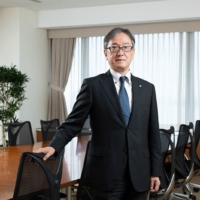I remember setting up a lesson for some second-year junior high school students a few years back. It was all rote by then; I had been teaching pretty much the same lesson for six years running. This time, though, I was teaching alongside a Japanese teacher who was new to the school.
In class, I introduced a few vocabulary words to the kids. Over the course of my tenure as an English teacher in Japan I had slowly and reluctantly shifted from the Samuel L. Jackson school of pronunciation discipline ("Add that 'O' sound to 'bat' again. Go ahead, I dare you! I double dare you!") to an almost passive acceptance that, minus spending time overseas immersed in an English environment, my students had little hope of reversing the damaging effect katakana had on their speaking ability.
Katakana is the Japanese alphabet used for words that are foreign in origin. And two hours per month spent listening to my Brooklyn accent wasn't going to offset the 12 hours per month they spent in an English class run by a Japanese teacher who used katakana constantly, not to mention living in a country submerged in it. So, little by little, I surrendered to what I thought was the inevitable and focused primarily on teaching grammar.


















With your current subscription plan you can comment on stories. However, before writing your first comment, please create a display name in the Profile section of your subscriber account page.